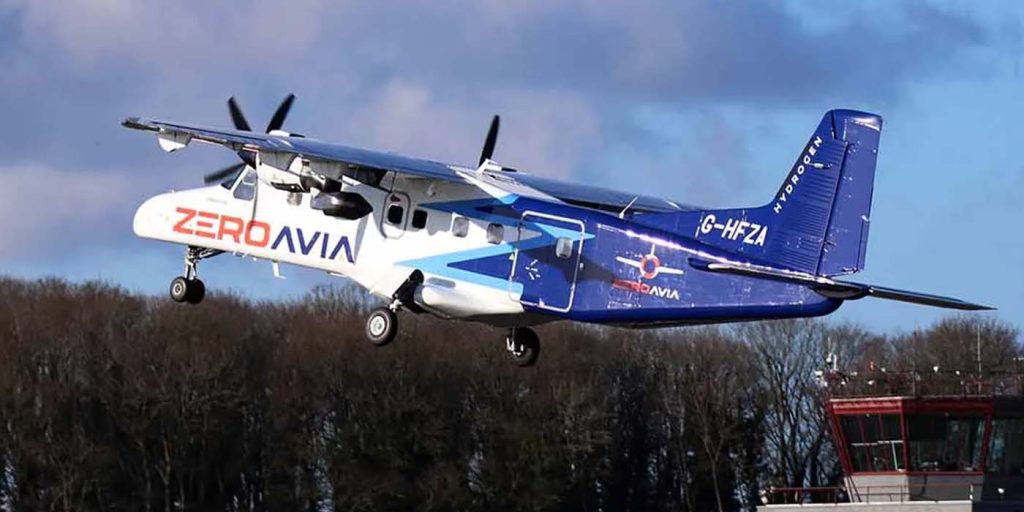
Autonomous freight aircraft developer Natilus has announced it will offer ZeroAvia’s ZA600 hydrogen-electric engine as a propulsion option on its blended wing body (BWB) cargo plane. The two aviation companies have formed a strategic partnership to jointly-develop an unmanned aerial vehicle (UAV) flown entirely by hydrogen-electric propulsion.
As one of the more prominent zero-emission aviation developers that is actually putting planes in the air, ZeroAvia has been an exciting company to follow over the years. We’ve watched it garner huge funding, share a decades-long timeline of zero-emission plane development, and achieve permits to fly in the UK.
Things really got exciting when ZeroAvia finally took flight with its ZA600 hydrogen-electric engine attached to a 19-passenger plane this past January – the largest in the world at the time. With experimental certification from both the CAA (UK) and FAA (US) secured, and $10 billion in pre-orders, ZeroAvia continues working toward its goal of delivering and certifying two zero-emission engine classes by 2027.
Autonomous cargo plane developer Natilus is the next company to show faith in ZeroAvia’s 600kW hydrogen-electric propulsion and looks to add the technology as an option to its Kona aircraft, which will have a wingspan of 85 feet (26 meters).

Natilus to deliver electric cargo plane powered by ZeroAvia
ZeroAvia and Natilus shared details of their new strategic partnership in a release this morning, relaying a shared responsibility in instituting aviation practices that will better the environment in multiple ways.
Through the partnership, Natilus intends to integrate ZeroAvia’s 600kW hydrogen-electric technology onto its Kona blended-wing body cargo aircraft as the sole source of propulsion. In ZeroAvia’s previous test flights with the ZA600, it has kept a combustion engine on the other side of the plane as a contingency.
Natilus explained that the Kona’s BWB design offers increased interior volume for hydrogen storage, potentially extending the range of the electric cargo plane without any emissions. However, if you’re looking to see the Kona haul the 3.5 tons of cargo it has been designed to transport any time soon, you’re going to have to wait a bit.
Natilus just recently validated the BWB design of the cargo plane using a quarter-scale prototype (see below). The company is now constructing a full-scale demonstrator prototype that could eventually see ZeroAvia’s ZA600 engines attached.
Despite not having a full size cargo plane to fly yet, Natilus says it has over $6.8 billion in order commitments, tallying over 460 aircraft pre-orders from major airlines. ZeroAvia founder and CEO Val Miftakhov spoke to Natilus’ progress thus far:
Given Natilus’ impressive order book and corresponding technology development, working together on integrating the ZA600 as a line-fit engine for Kona can multiply the emissions and costs benefits that are already interesting cargo operators. We all depend on air cargo operators, and some communities depend on them absolutely, so improving the economics and environmental impacts of these operations while increasing service levels is a massive opportunity.
Together, the companies hope to leverage their respective expertise in aviation to deliver scalable, long-range, hydrogen-electric cargo planes that will reshape the entire industry. Trust that we will be watching as each of these companies progress separately and as partners. As promised, here’s that video of Natilus testing its scaled down cargo plane prototype in California.
FTC: We use income earning auto affiliate links. More.



Comments